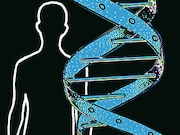All determinants also associated with bone mineral density, which showed causal effect on fracture
MONDAY, Sept. 10, 2018 (HealthDay News) — Fifteen genetic determinants of fracture, which are also associated with bone mineral density, have been identified, according to a meta-analysis of genome-wide association studies (GWAS) published online Aug. 29 in the BMJ.
Katerina Trajanoska, from Erasmus Medical Center in Rotterdam, the Netherlands, and colleagues conducted a meta-analysis of GWAS using data from 25 cohorts with genome-wide genotyping and fracture data. The discovery set included 37,857 fracture cases and 227,116 controls; replication was conducted in up to 147,200 fracture cases and 150,085 controls.
The researchers found that all 15 fracture-associated loci identified were also associated with bone mineral density and mapped to genes clustering in pathways known to be critical to bone biology or novel pathways. There was a clear effect of bone mineral density on fracture risk in Mendelian randomization analyses. There was a 55 percent increase in fracture risk with each one standard deviation decrease in genetically determined bone mineral density at the femoral neck. There was an inverse association between hand grip strength and fracture risk; after multiple testing correction, the result was not significant. There was no evidence for an effect on fracture for the remaining clinical risk factors, including vitamin D levels.
“Among the clinical risk factors for fracture assessed, only bone mineral density showed a major causal effect on fracture,” the authors write.
Several authors disclosed ties to pharmaceutical and biotechnology companies, some of which provided funding for the study.
Copyright © 2018 HealthDay. All rights reserved.








